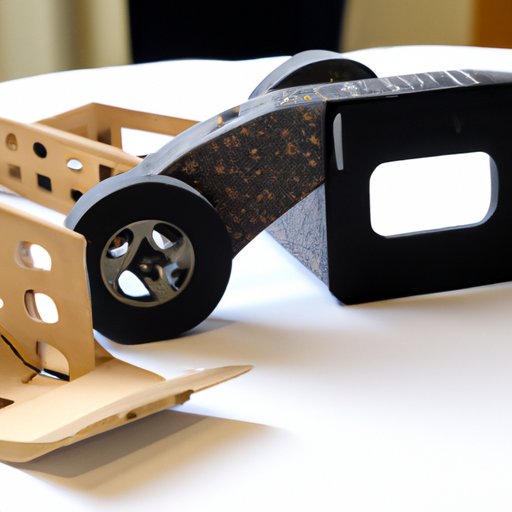Introduction
Are you an aspiring inventor but don’t know where to start? Inventing a machine is a complex process that takes time, dedication, and creativity. This guide is intended for beginners who want to learn how to invent a machine and explore the vast world of machinery design. In today’s world, machines are essential to almost every industry and can improve our lives in countless ways. By inventing a machine, you could help revolutionize an entire industry or even change the world. This article will provide a step-by-step guide to inventing a machine, a historical overview, inspirational stories, case studies, expert interviews, and frequently asked questions.
Step-by-Step Guide to Inventing a Machine
The following steps will guide you through the invention process:
1. Identify the Need or Problem
The first step to inventing a machine is to identify a need or problem. Think about what you are passionate about or what you notice lacking in your daily life or industry. Consider problems that others face and how you could create a solution. Talk to potential users and experts in your field to ensure your idea is valid and valuable.
2. Conduct Market Research
After identifying a potential need or problem, conduct market research to determine if there is already an existing solution. Consider the competition and how your design could improve on existing solutions or create a new market. Market research will ensure your idea has commercial potential and help you determine your target audience.
3. Generate Ideas and Select the Best One
Brainstorm ideas and potential solutions to the problem you identified. Consider the feasibility, practicality, and marketability of each idea. Choose the best solution that meets the need or solves the problem.
4. Create a Prototype
Create a prototype of your machine, taking into account the various components required and the necessary materials. This is a crucial step in the invention process as it allows you to test and refine your design.
5. Test the Prototype
Test your prototype thoroughly to ensure it works as intended. Identify any flaws, errors, or areas that need improvement.
6. Refine and Improve the Design
Based on the results of the testing, refine and make improvements to your design. This process may take several iterations until you have a final design that meets the needs and functions effectively.
7. Seek Legal Protection such as Patents
Before bringing your machine to market, seek legal protection such as patents to protect your intellectual property and prevent others from infringing on your design.
A Historical Overview of Machine Invention
Throughout history, humans have always sought new and improved ways to automate tasks and increase efficiency. From simple machines such as the pulley to complex machines such as airplanes, machines have played a crucial role in society. Today, machines are used in almost every industry, from healthcare to manufacturing to transportation.
Contemporary designs such as drones, self-driving cars, and robotics are revolutionizing the way we live and work. By studying the history of machine invention, aspiring inventors can draw inspiration from the past and discover new possibilities for the future.
Inspirational Stories
Many successful inventors have faced challenges and setbacks on their journey to creating game-changing machines. These inspirational stories can help aspiring inventors persevere through the ups and downs of the invention process. Some key lessons from these stories include:
- The importance of persistence and resilience
- The value of collaboration and seeking expert advice
- The need for a strong work ethic and a clear vision
Case Studies
Understanding the process and outcomes of successful machine inventions can help aspiring inventors learn from the experiences of others. Case studies may involve analyzing the design, engineering, and commercial success or failures of specific machines.
Expert Interviews
Interviewing experts in the field of machine invention can provide valuable insight and advice to aspiring inventors. These experts can offer advice on everything from engineering design to patents and product commercialization.
Frequently Asked Questions
For beginner inventors, it’s common to have questions and misconceptions about the invention process and the requirements for inventing a machine. This section can address commonly asked questions and provide clarity on specific aspects of the invention process.
Conclusion
Inventing a machine is a complex process that takes time, dedication, and creativity. By following the step-by-step guide outlined in this article, historical overviews, inspirational stories, case studies, expert interviews, and frequently asked questions, aspiring inventors have all the resources they need to embark on their machine invention journey. Remember that failures and setbacks are common, but with persistence and a clear vision, you can create a game-changing machine that could revolutionize your industry or change the world.
(Note: Is this article not meeting your expectations? Do you have knowledge or insights to share? Unlock new opportunities and expand your reach by joining our authors team. Click Registration to join us and share your expertise with our readers.)
